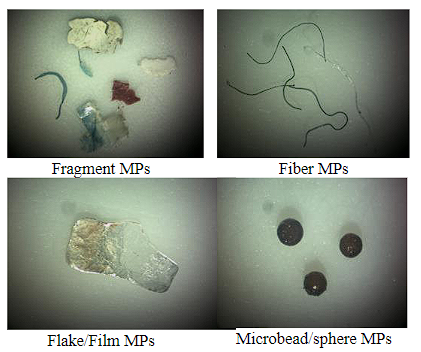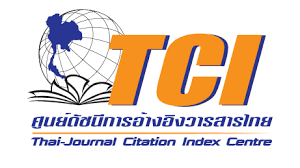Occurrence and Removal of Microplastics in Activated Sludge Treatment Systems: A Case Study of a Wastewater Treatment Plant in Thailand
doi: 10.14456/mijet.2022.15
Keywords:
Activated sludge process, Domestics wastewater, FTIR, Microplastics, Occurrence, Removal efficiencyAbstract
Domestic wastewater treatment plants involved as a point source of microplastics (MPs) distribution to the environment. The conventional wastewater treatment systems were not designed for MPs removal. Due to immense wastewater effluent discharge, the rate of MPs discharge is possibly high and thus needs to be evaluated. Therefore, a conventional activated sludge wastewater treatment plant at Mahidol University Salaya Campus was selected to investigate the occurrence of MPs and their removal efficiency. The influent and effluent samples were collected and filtered with 100 µm filter bags by using a pump system. The samples were treated with Fenton’s reagent, and sodium iodide was used to remove interferences in the environmental matrix. The MPs were manually picked and grouped by size and shape using a stereomicroscope followed by determining the chemical composition using Attenuated Total Reflection-Fourier Transform Infrared ATR-FTIR spectroscopy. The overall concentration of MPs was found to be 0.40 MPs/L in the influent and 0.05 MPs/L in the effluent sample. The treatment plant showed 86.5% efficiency in MP removal. The predominantly detected shapes of MPs were fibers with 86 % and fragments with 85 % removal rate. The detected MPs with the size range of 600-1100 µm were in high abundance in the effluent sample. Additionally, the concentration of larger-sized MPs was significantly lower in the effluent with good removal efficiency. The chemical composition of the detected types of MP fragments revealed PP, PMMA, cellophane, and PET fibers in the effluent. Interestingly, high-density polymers such as PVC, blend PC/PE, and PTFE/P microbead were not detected in the effluent. The results indicate that the small MPs are still released with the effluents and a few types of MPs could be retained in the sludge. Therefore, the understanding of how MPs are released along with effluent wastewater and their composition may help in determining the potential sources of MPs in incoming wastewater to treatment plants.
References
M. Bilgin, M. Yurtsever and F. Karadagli, "Microplastic removal by aerated grit chambers versus settling tanks of a municipal wastewater treatment plant," Journal of Water Process Engineering, vol. 38, 2020.
S. Karbalaei, P. Hanachi, T. R. Walker and M. Cole, "Occurrence, sources, human health impacts and mitigation of microplastic pollution," Environ Sci Pollut Res Int, vol. 25, no. 36, 2018, pp. 36,046-36,063.
D. Sol, A. Laca, A. Laca and M. Diaz, "Approaching the environmental problem of microplastics: Importance of WWTP treatments," Sci Total Environ, 740, 140016, 2020.
W. Liu, J. Zhang, H. Liu, X. Guo, X. Zhang, X. Yao, Z. Cao and T. Zhang, "A review of the removal of microplastics in global wastewater treatment plants: Characteristics and mechanisms," Environ Int, 146, 106277, 2021.
T. Buadit, S. Aroonsrimorakot, K. Bhaktikul and P. Thavipoke, "Biogas Production and Greenhouse Gases Reduction from Wastewater at Mahidol University, Salaya Campus, Thailand," APCBEE Procedia, vol. 5, 2013, pp. 169-174.
K. Conley, A. Clum, J. Deepe, H. Lane and B. Beckingham, "Wastewater treatment plants as a source of microplastics to an urban estuary: Removal efficiencies and loading per capita over one year," Water Res X, 3, 100030, 2019.
F. Murphy, C. Ewins, F. Carbonnier and B. Quinn, 2016. "Wastewater Treatment Works (WwTW) as a Source of Microplastics in the Aquatic Environment," Environ Sci Technol, vol. 50, no. 11, 2016, pp. 5800-5808.
M. Simon, N. V. Alst and J. Vollertsen, "Quantification of microplastic mass and removal rates at wastewater treatment plants applying Focal Plane Array (FPA)-based Fourier Transform Infrared (FT-IR) imaging," Water Res., vol. 142, 2018, pp. 1–9.
N. Ding, D. An, X. Yin and Y. Sun, "Detection and evaluation of microbeads and other microplastics in wastewater treatment plant samples," Environ Sci Pollut. Res Int., vol. 27, no. 13, 2020, pp. 15,878-15,887.
X. Liu, W. Yuan, M. Di, Z. Li and J. Wang, "Transfer and fate of microplastics during the conventional activated sludge process in one wastewater treatment plant of China," Chemical Engineering Journal, vol. 362, 2019, pp. 176-182.
S. Y. Ren, Q. Sun, H. G. Ni and J. Wang, "A minimalist approach to quantify emission factor of microplastic by mechanical abrasion," Chemosphere, 245, 125630, 2020.
L. C. De Sa, M. Oliveira, F. Ribeiro, T. L. Rocha and M. N. Futter, M.N. "Studies of the effects of microplastics on aquatic organisms: What do we know and where should we focus our efforts in the future?," Sci Total Environ, 645, 2018, pp. 1,029-1,039.
Z. Long, Z. Pan, W. Wang, J. Ren, X. Yu, L. Lin, H. Lin, H. Chen and X. Jin, "Microplastic abundance, characteristics, and removal in wastewater treatment plants in a coastal city of China," Water Res., vol. 155, 2019, pp. 255-265.
M. Chan, "Reducing microplastics from facial expoliating cleansers in wastewater through treatment versus consumer product decisions," Marine Polluiton Bulletin, vol. 101, 2015, pp. 330-333.
K. Tadsuwan and S. Babel, "Microplastic contamination in a conventional wastewater treatment plant in Thailand," Waste Manag. Res., 734242X20982055, 2021.
K. Duis and A. Coors, "Microplastics in the aquatic and terrestrial environment: sources (with a specific focus on personal care products), fate and effects," Environ. Sci. Eur., vol. 28, no. 1, 2016, pp. 2.

Downloads
Published
How to Cite
Issue
Section
License

This work is licensed under a Creative Commons Attribution-NonCommercial-NoDerivatives 4.0 International License.








